How to Get Rid of Flies Outside: 12 Effective Methods
-

- Last updated:
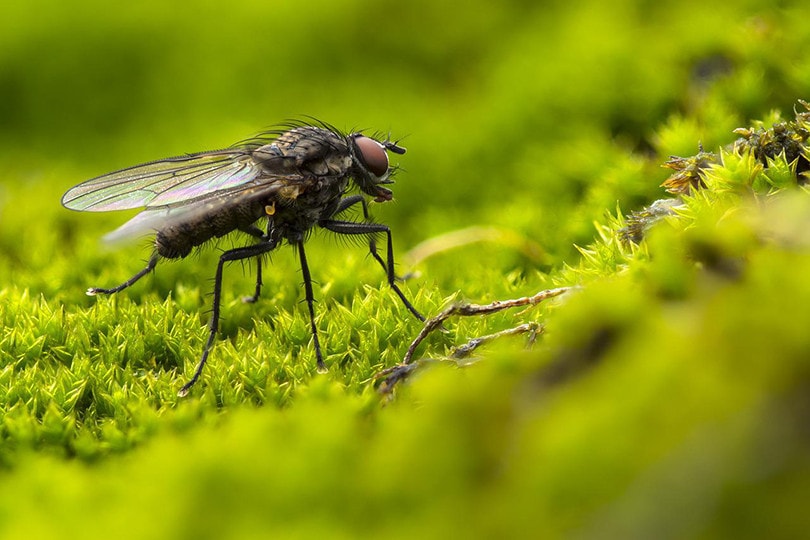
Flies are a fairly common occurrence in many homes, no matter where you’re located or how clean you are. But, if you start to notice that there are more flies in your home or around it than usual, chances are that you may have an infestation. Getting rid of flies outside of your home typically requires a mix of different outdoor treatment measures.
Note that it’s impossible to eliminate all flies from the outdoor area of your home, but you can definitely control their population to keep it manageable. And if you are planning an outdoor gathering in the backyard or on a deck or patio, there are definitely measures that he may want to take to prevent them from ruining your soiree. Let’s take a look at the most effective ones.
The 12 Methods for Getting Rid of Flies Outside
1. Spray Insecticides
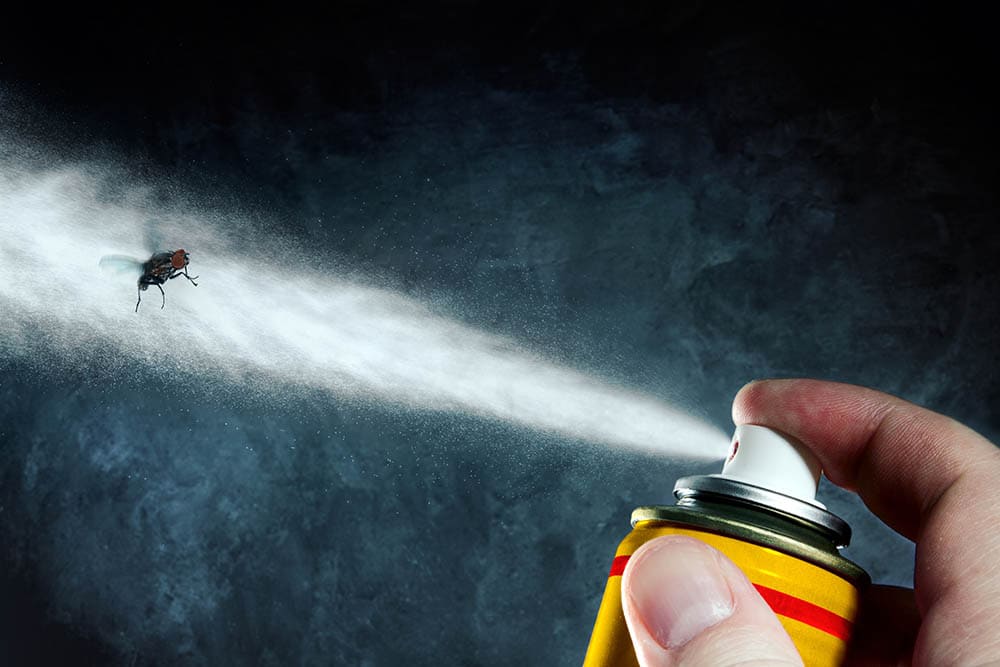
One of the most efficient ways to get rid of flies is to simply spray your exterior with a concentrated insecticide for a small outdoor population. If you have a high to medium fly population around your home, this method should be used in conjunction with another, such as traps.
For large outdoor areas, use a hand pump sprayer to mix the insecticide and water according to its label. The diluted solution should be applied to door frames, windows ledges, above porch lighting, on eaves, and on other surfaces where flies may rest. For ongoing issues, you should repeat this application once a month during the warmer seasons.
2. Fly Traps
If you have a high-level infestation, trapping house flies outside is an even more effective way to manage them. When insecticides are not feasible or desired, fly traps may be a better option. The fly traps create an inviting environment that attracts females to lay eggs. The flies cannot escape once they’re inside the trap.
Fly traps should be placed no more than about 25-30 feet away from your home or any area that you want to protect against house flies. The traps should not be higher than eye level and should be placed in a sunny area for maximum protection. The instructions for each trap may vary from one to the next. It’s best to check the trap at least twice per week, and then change it when it becomes full.
3. Fly Baiting
And then there’s always baiting. Baiting house flies can be done when the fly source becomes too difficult to control. Baiting is often the go-to method for outside areas that will always be prone to fly such as around dumpsters, on farms, in kennels, or around composting areas.
The fly baits usually contain a food/insecticide that attracts the flies and then kills them once they’ve consumed it. The fly bait product label will tell you how much bait to put in each individual station. You can then mount them on walls or other surfaces where flies might be a problem.
Some baits also come with a locking lid that allows only flies to access the station, protecting it from the elements and wildlife. You can often attach the station to other surfaces using screws or zip ties.
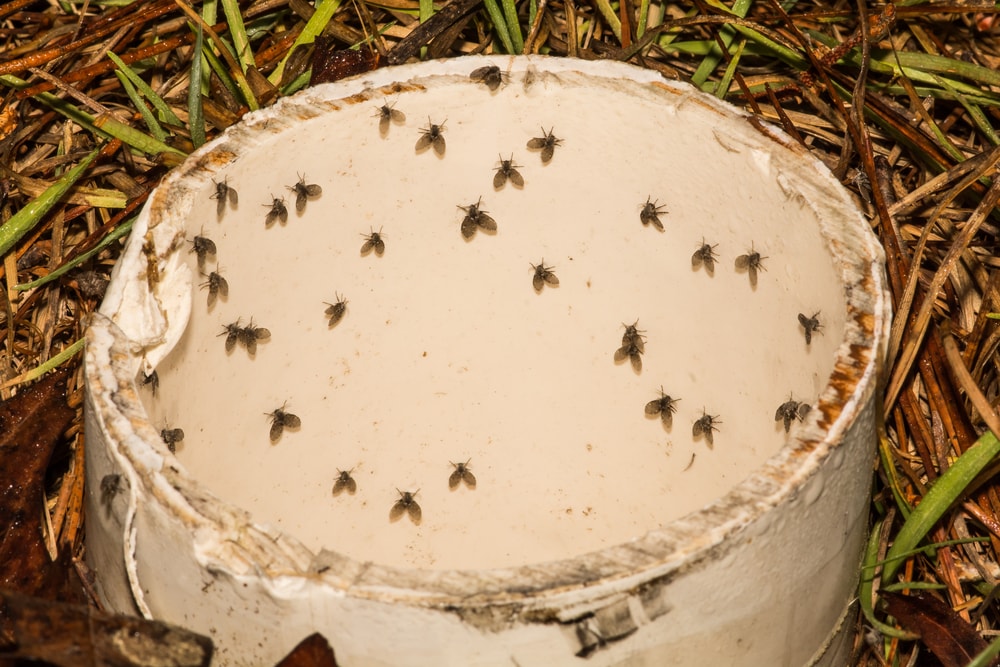
4. Light Traps
Light traps are similar to other traps, but they use powerful ultraviolet rays to attract flying insects. They then capture them on a glue board without the need for insecticides–and you can always spray the glue board with insecticides. These lights are very useful for homes and businesses that have houseflies as a problem or where insecticides aren’t permitted for use.
There are many options when it comes to fly lights. They come in many sizes, shapes, and colors. Before installing this type of device, it is important to choose the right location. Installing the light in sensitive areas is important, as this will draw them away from areas that could cause contamination of food products or that may be too close to areas frequented by people.
To reduce the likelihood of flies being attracted by competing light sources, fly lights should be kept away from windows and doors that open to the outdoors. For the best placement information, make sure to read the label on the fly light you purchase.
DIY Remedies for Flies
If you prefer not to use traps or lights, you can always create your own remedies for keeping flies away from your outdoor areas. Here are some of the most commonly used DIY methods for getting rid of flies effectively and safely.
5. Lavender

Because lavender is available in many forms, it’s one of the easiest methods to eliminate flies from around your home. You can keep them away by growing lavender plants outdoors, placing a bouquet of fresh lavender flowers in a vase on a patio, or burning lavender oil near your windows.
6. Orange Peels
Commercial fly repellents often contain lemon or orange extracts. Citrus oil repels fly infestations naturally and it can make the area outside of your home smell wonderful. For this method, simply place the citrus peels where you see the flies buzzing around–which may often be near windows, patio doors, or on decks. To keep the citrus peels moist, you can place them in a small towel on a plate. Rub the peels with a dry paper towel every week to keep their scent fresh.
7. Citronella Candles
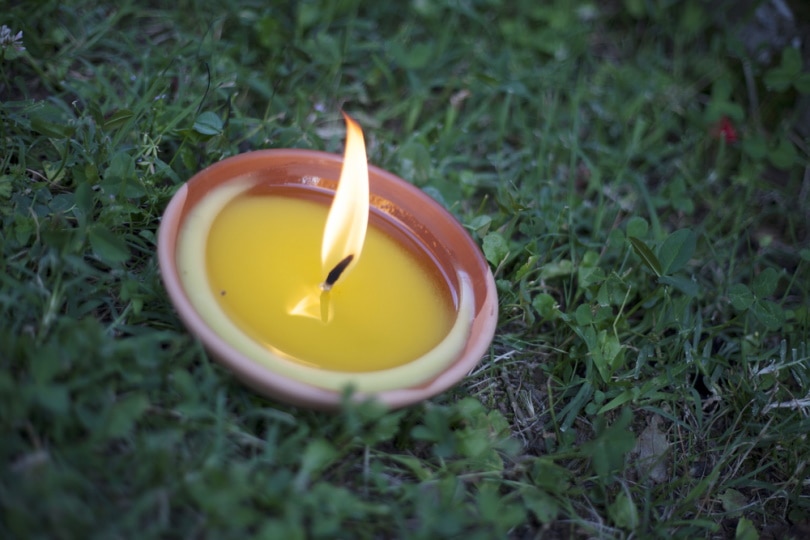
Citronella pretty much has the same effect that orange peels too. Not only is it a lovely scent for most people, but it can be one of the biggest fly and mosquito repellents that you can get. All you have to do is place several candles on your patio or front porch. The fire itself usually attracts flies, but the candle’s smell will keep them at a considerable distance.
8. Cayenne Pepper
Cayenne pepper repels flies and deters other insects such as mosquitoes and fleas. For this method, combine one cup of water with one teaspoon of cayenne pepper and put it into a spray bottle. Spray the solution around windows, entryways, and other areas where you see flies.
9. Pine Oil
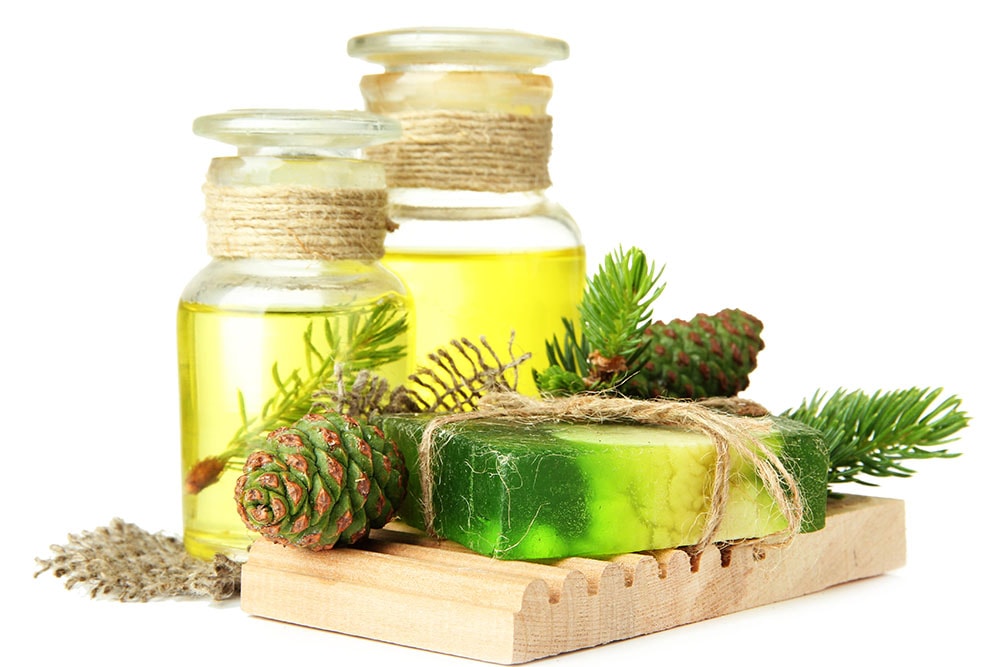
Pine oil is strong and effective in repelling fly larvae. It’s also a great deodorizer and will help repel other bugs as well. Apply a few pine oil drops to a cheesecloth or dry paper towel and leave it there. Pine oil can also be soaked in cotton balls and placed in a bowl to help keep flies away from window seals in basements and attics.
10. Vinegar and Dish Soap
Mixing apple cider vinegar with dish soap will trap and kill flies. In a tall glass, mix about one inch of apple cider vinegar with a few drops of dish soap. Wrap the glass in plastic wrap and secure it with rubber bands. Make small holes in the top using a fork. Flies will fly through the holes because they’re attracted to vinegar in the glass. They’ll then sink within the vinegar instead of landing on top of it due to the dish soap.
11. DIY Fly Trap
You can also create your own “honey trap” for flies. In a mason container, combine a quarter cup of sugar and about one cup of tap water. Make a cone from a piece of stiff paper.
Cut the point off and place it in the mason jar. Tape the longer end of the paper to the mouth of the jar, making sure there are no gaps between the jar and the paper. The sweet nectar will attract the flies and they won’t find a way out of the jar.
12. Sticky Traps

You can find sticky traps and almost any home improvement store and sometimes even at the grocery store. They’re also one of the least expensive fly trap options that you can purchase. Sticky traps can be used almost anywhere, and you can also attach them to window seals or door frames.
These sticky traps are coated with a sticky substance (and you can also add insecticide) that attracts flies and traps them there. They can stick to anything so be very careful when you use them indoors, and be sure not to touch the sticky side with your fingers as it’s very difficult to remove. If you happen to get it on your fingers, use oil and dish soap to remove it asap.
Wrapping Things Up
Flies hovering around or inside of your home can be a huge nuisance. Thankfully, there are several ways that you can trap the flies and/or eliminate them. This includes fly traps, insecticides, citronella candles, natural herbs, and light traps.
The best method to use depends on whether you’re looking to remove an indoors or outdoors and the level of infestation that you’re dealing with. However, remember to use caution when applying fly insecticides, as many of the ingredients in these insecticides can also be fatal to plants and dangerous for humans.
See also:
Featured Image Credit: adege, Pixabay
Contents

